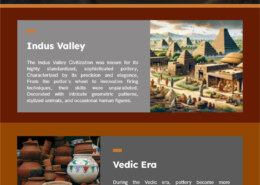what role did water management play in Harappan cities?
The Post Mauryan era witnessed significant developments in art and architecture. Though several kingdoms rose on the ruins of the Mauryan Empire, these regional kingdoms took multiple steps to advance the country's rich heritage. In India, we can witness specimens of prominent sculptures during thisRead more
The Post Mauryan era witnessed significant developments in art and architecture. Though several kingdoms rose on the ruins of the Mauryan Empire, these regional kingdoms took multiple steps to advance the country’s rich heritage. In India, we can witness specimens of prominent sculptures during this period, like the stupa at Bharhut, Sanchi, and sculptures at Vidisha, Udayagiri, and Khandagiri caves in Odisha, among others.The sculptures from Bharhut are comparable in height to the Mauryan-era representations of Yaksha and Yakhshini.
- anchi Stupa-1, Mathura, and Vengi in Andhra Pradesh are examples of the stylistic development of art at this time (Guntur District).
- There are two circumambulatory paths, upper and lower, around the stupa at Sanchi.
- The torans at the Stupa are elegantly designed.
- Many incidents from the Buddha’s life and the Jataka stories are shown in these torans.
- The Kushinara siege, the Buddha’s visit to Kapilavastu, and Ashoka’s visit to the Ramgrama Stupa are among the noteworthy sculptures in this location.




Water management played a crucial role in the daily lives and overall success of Harappan cities. Imagine living in an ancient civilization where clean, accessible water was vital for everything from drinking and cooking to farming and sanitation. The Harappans were incedibly advanced in ensuring thRead more
Water management played a crucial role in the daily lives and overall success of Harappan cities. Imagine living in an ancient civilization where clean, accessible water was vital for everything from drinking and cooking to farming and sanitation. The Harappans were incedibly advanced in ensuring this important resource was available to everyone. In their cities, you would find well-planned system of wells, reservoirs, and drains. Almost every house had its own well, and covered drains ran along the streets to remove waste water. This advanced system kept the city clean and supported agriculture, showing how important water was to their daily life and overall success. The Harappans’ smart water management was key to their city planning and helped their civilization thrive. Their effective use of water resources shows their cleverness and planning skills, which are still important in city planning today.
See less